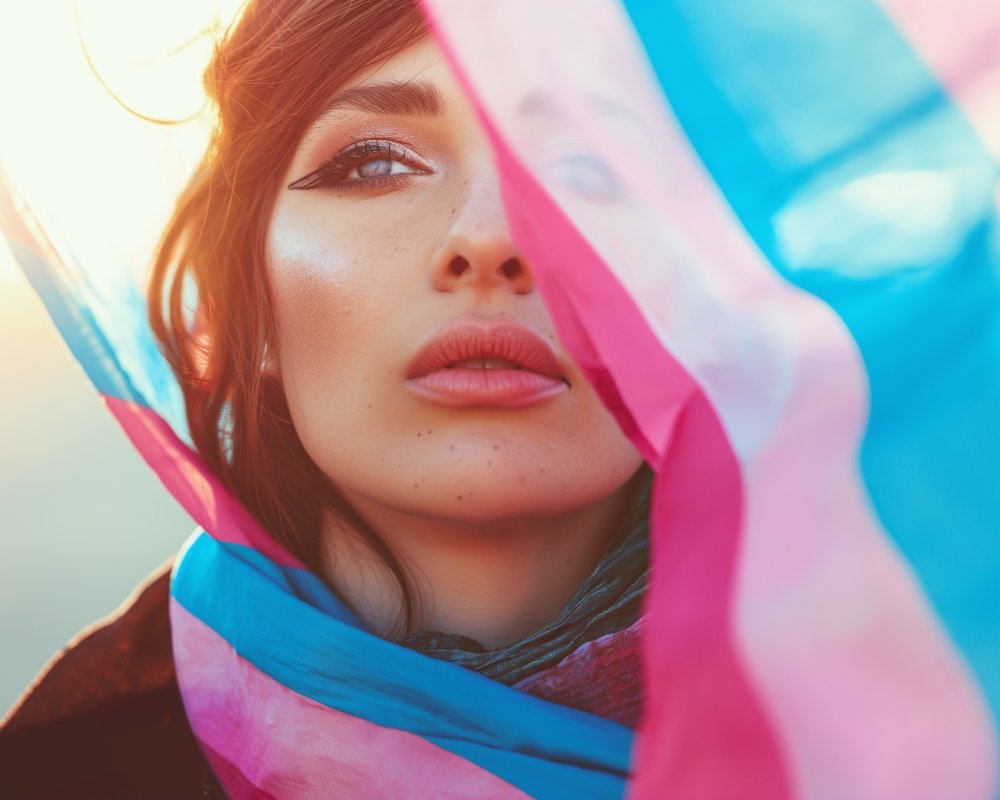
What is a Transvestite: Understanding the Meaning, History, and Cultural Significance
The concept of gender identity and expression is diverse and multifaceted. Among the various terms that often come up in discussions about gender, the term “transvestite” frequently sparks curiosity and sometimes confusion. So, what is a transvestite? This blog aims to delve deep into this topic to explore its meaning, history, cultural significance, and the differences between related terms.
What is a Transvestite?
A transvestite is an individual who wears clothing traditionally associated with the opposite sex. The term “transvestite” comes from the Latin words “trans,” meaning across, and “vestire,” meaning to dress. People who are transvestites may do so for various reasons, including self-expression, comfort, or performance. It is crucial to understand that being a transvestite is not inherently linked to one’s sexual orientation.

The History of Transvestitism
The practice of transvestitism has a rich history that spans across different cultures and eras. Understanding the historical context can provide insight into how society’s perceptions of gender and clothing have evolved.
Transvestitism in Ancient Cultures
Transvestitism has been present in various forms since ancient times. In ancient Rome, men often dressed in women’s clothing for theatrical performances. Similarly, in ancient Greece, actors who performed in plays, including those of Euripides and Aristophanes, often wore attire of the opposite gender.
Transvestitism in Traditional Theater
Traditional theater has a long history of cross-dressing. In Shakespearean England, all female roles were played by men, as women were not allowed to perform on stage. This tradition continued in Japanese Kabuki theater, where male actors, known as “onnagata,” specialized in playing female roles.
Transvestitism in Modern Entertainment
In modern times, transvestitism has found a place in entertainment through drag performances and drag culture. Drag queens and kings use clothing and makeup to create exaggerated personas of the opposite gender, often for entertainment, satire, or self-expression. Shows like “RuPaul’s Drag Race” have brought drag culture into the mainstream, promoting greater acceptance and understanding.
Advertisement · Scroll to continue
Recommended
Difference Between Crossdresser and Transvestite
Understanding the difference between crossdresser and transvestite is essential as these terms, while similar, have distinct meanings.
Defining Crossdressers
A crossdresser is someone who occasionally wears clothes traditionally associated with the opposite sex. This act is typically for personal satisfaction, comfort, or self-expression and does not necessarily relate to their sexual orientation or gender identity. Crossdressers often continue to live their daily lives in their birth-assigned gender roles.

Defining Transvestites
While the term transvestite is often used interchangeably with crossdresser, it can carry different connotations. Transvestites might engage in cross-dressing more regularly and have a deeper emotional or psychological connection to the practice. However, being a transvestite does not imply any specific sexual orientation.

What is a Transvestite Woman?
A transvestite woman typically refers to a male at birth who enjoys wearing women’s clothing. This practice is a form of self-expression, comfort, or part of a performance. It’s important to note that being a transvestite woman does not necessarily indicate a desire to transition to the female gender. It is more about the act of cross-dressing and the identity it brings.
What is a Transvestite Man?
Conversely, a transvestite man usually refers to a female at birth who enjoys dressing in traditionally male clothing. This can serve similar purposes, such as self-expression and comfort. As with transvestite women, this does not necessarily indicate any desire to transition to the male gender, but rather focuses on the act of cross-dressing itself.

Advertisement · Scroll to continue
Recommended
The Psychological Aspect of Transvestitism
Understanding the psychological motivations behind transvestitism is crucial. For many individuals, cross-dressing is a way to explore and express different facets of their identity. It can provide a sense of relief from societal norms and expectations associated with their birth-assigned gender.
Gender Fluidity
Some psychologists believe that cross-dressing can be linked to the concept of gender fluidity, where individuals feel they embody characteristics of both genders. For others, it may be a form of escapism or a way to experience life from a different perspective.
Self-Expression and Comfort
For many transvestites, cross-dressing is a form of self-expression and comfort. Wearing clothes traditionally associated with the opposite gender can provide a sense of authenticity and freedom that is not felt in their everyday attire.
Social and Cultural Perceptions of Transvestitism
Social and cultural perceptions of transvestitism vary widely across different societies and historical periods. In some cultures, cross-dressing is accepted and even celebrated, while in others, it is stigmatized and misunderstood.
Acceptance and Stigma
The level of acceptance and stigma associated with transvestitism can significantly impact the lives of those who identify as transvestites. In societies where cross-dressing is accepted, individuals may feel more comfortable expressing their identity. In contrast, in societies where it is stigmatized, individuals may face discrimination and misunderstanding.
Media Representation
Media representation plays a crucial role in shaping public perception of transvestitism. Movies, television shows, and literature often portray cross-dressing characters in a comedic or dramatic light. While some portrayals can be empowering and positive, others may reinforce stereotypes and contribute to misunderstandings.

Legal and Human Rights Issues
Legal and human rights issues related to transvestitism are complex and vary from country to country. In some places, cross-dressing is legally protected as a form of expression, while in others, it may be subject to legal restrictions or discrimination.
Legal Protections
In countries where cross-dressing is legally protected, individuals have the right to express their gender identity through clothing without fear of discrimination or legal repercussions. These protections are often part of broader LGBTQ+ rights movements.

Discrimination and Advocacy
In regions where cross-dressing is not legally protected, transvestites may face significant discrimination and legal challenges. Advocacy for the rights of transvestites often intersects with broader LGBTQ+ rights movements, emphasizing the importance of equality and acceptance for all.
Challenges Faced by Transvestites
Transvestites often face numerous challenges, including societal stigma, discrimination, and misunderstanding. These challenges can impact their mental health, social relationships, and overall well-being.
Societal Stigma
Societal stigma around cross-dressing can lead to negative consequences for transvestites, including social isolation, bullying, and mental health issues. Overcoming these stigmas requires education and awareness to foster greater acceptance and understanding.
Discrimination
Discrimination against transvestites can occur in various forms, including in the workplace, in social settings, and within families. Legal protections and advocacy are crucial in combating this discrimination and promoting equality.
Mental Health
The mental health of transvestites can be affected by the challenges they face. Access to mental health services and support groups can provide the necessary assistance to help individuals cope with these challenges.

Support and Resources for Transvestites
Various support and resources are available for transvestites, including online communities, support groups, and counseling services. These resources provide a safe space for individuals to share their experiences, seek advice, and find acceptance.
Online Communities
Online communities play a significant role in providing support and fostering connections among transvestites. Websites, forums, and social media groups allow individuals to share their stories, seek advice, and find solidarity with others who share similar experiences.
Support Groups
Support groups, both online and in-person, offer a space for transvestites to connect and share their experiences. These groups often provide emotional support, practical advice, and a sense of community, helping individuals navigate the complexities of their identity.

Counseling and Mental Health Services
Counseling and mental health services can be invaluable for transvestites dealing with the psychological aspects of their identity. Therapists with experience in gender issues can offer support and guidance, helping individuals understand and embrace their identity.
Notable Figures and Representation
Throughout history, there have been notable figures who have identified as transvestites or engaged in cross-dressing. Their stories and contributions have helped shape the understanding and acceptance of transvestitism in society.
Historical Figures
Historical figures such as Chevalier d’Éon, a French diplomat and soldier who lived as both a man and a woman, have challenged traditional gender norms and paved the way for greater acceptance of gender diversity.
Modern Representation
In modern times, celebrities and public figures like RuPaul, who has popularized drag culture through shows like “RuPaul’s Drag Race,” have brought cross-dressing and transvestitism into the mainstream. Their visibility has contributed to a broader understanding and acceptance of diverse gender expressions.

Understanding What’s a Transvestite Woman and Man
Understanding what’s a transvestite woman and what’s a transvestite man involves recognizing that these individuals engage in cross-dressing for various reasons, including self-expression, comfort, and performance. It is important to approach the topic with respect and openness.
Personal Satisfaction and Comfort
For many transvestites, cross-dressing provides personal satisfaction and comfort. It allows them to express facets of their identity that they may not be able to in their everyday attire. Understanding this motivation is crucial in fostering acceptance and support.
Performance and Art
For some transvestites, cross-dressing is an integral part of their performance and artistic expression. Drag performers, for example, use clothing and makeup to create exaggerated personas of the opposite gender, often for entertainment, satire, or self-expression.
Conclusion
Understanding what is a transvestite involves recognizing the rich history, diverse motivations, and cultural significance of cross-dressing. Whether driven by personal satisfaction, performance, or a deeper exploration of identity, transvestitism is a valid and meaningful form of self-expression.
By fostering greater understanding and acceptance, we can create a more inclusive society where individuals can express their true selves without fear of stigma or discrimination. The journey to understanding what’s a transvestite is ongoing, but with education and empathy, we can support and celebrate the diversity of human experience.
As we continue to explore and understand the complexities of gender identity and expression, it is crucial to approach the topic with respect and openness. Recognizing the difference between crossdresser and transvestite, and understanding what’s a transvestite woman or man, helps create a more inclusive and compassionate world.
Advertisement · Scroll to continue

More Recommended
How Gay Businesses are Thriving in Today’s Market
From Discrimination to Celebration: How Gay Businesses are Thriving in Today’s Market In today’s society, [...]
Reaching the Untapped Market: How to Target Lesbians Effectively
Why Targeting Lesbians Is Important Lesbians make up a significant portion of the LGBTQ community, [...]
Understanding the Challenges Faced by Gay Seniors
Understanding the Challenges Faced by Gay Seniors – It is important to recognize and address [...]
Why Is Mental Health Awareness Important for Gays?
Why Is Mental Health Awareness Important for Gays? – The LGBTQ+ community, which includes Gay, [...]
Why Is There Still Discrimination Against Gays?
Why Is There Still Discrimination Against Gays? – The LGBTQ+ community has long been a [...]
Single Lesbian Cruises
Single Lesbian Cruises: A Comprehensive Guide Table of Contents Introduction: Single Lesbian Cruises in the [...]
The Power of Representation: Why Diversity in Advertising Matters
The Power of Representation: Why Diversity in Advertising Matters In today’s world, representation matters more [...]
The Future of Advertising: Why Brands are Turning to Gay Marketing Agencies for Authenticity and Inclusion
The Future of Advertising: Why Brands are Turning to Gay Marketing Agencies for Authenticity and [...]
Why Target is the Go-To Destination for Lesbian Shoppers
Why Target is the Go-To Destination for Lesbian Shoppers Are you a lesbian shopper looking [...]